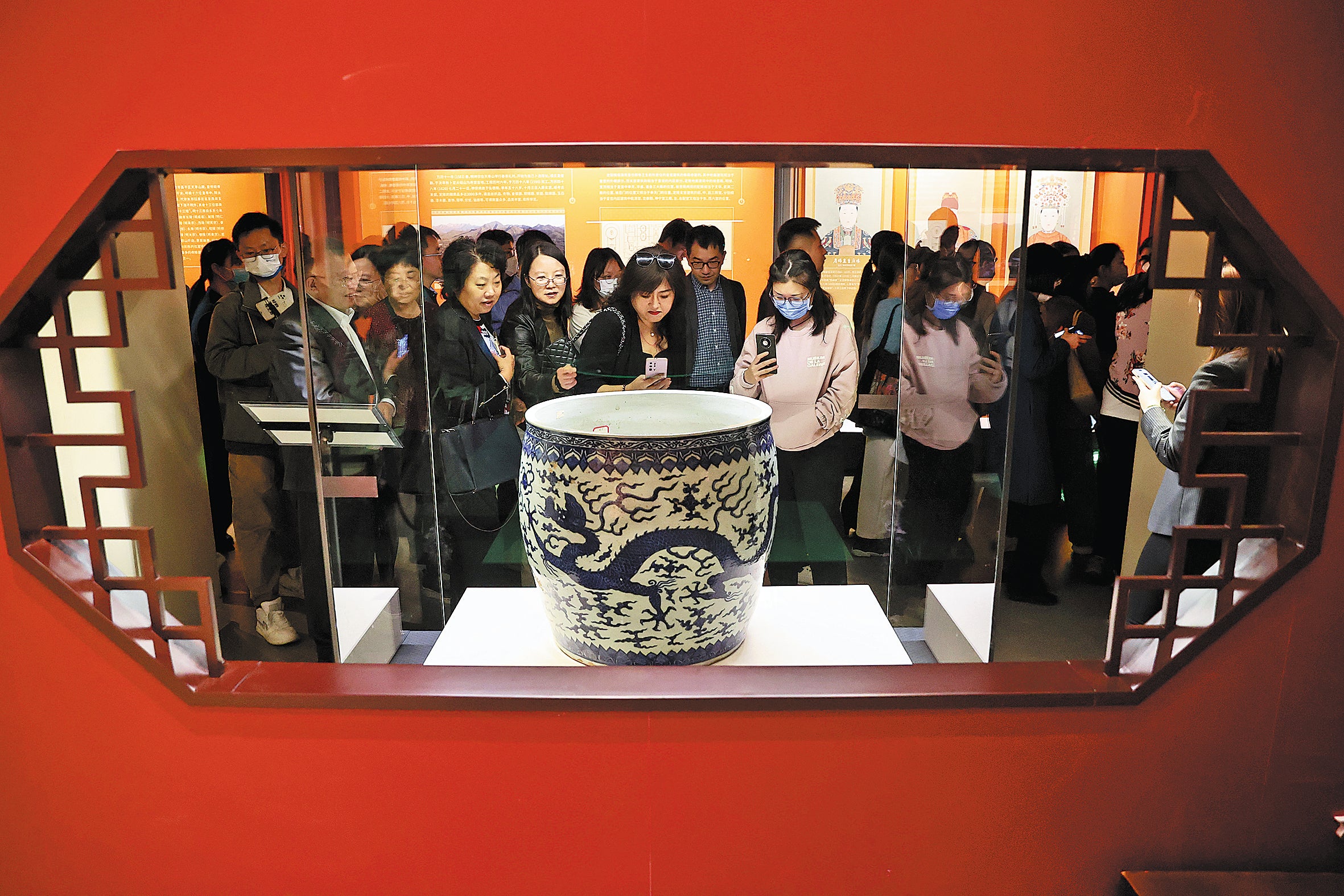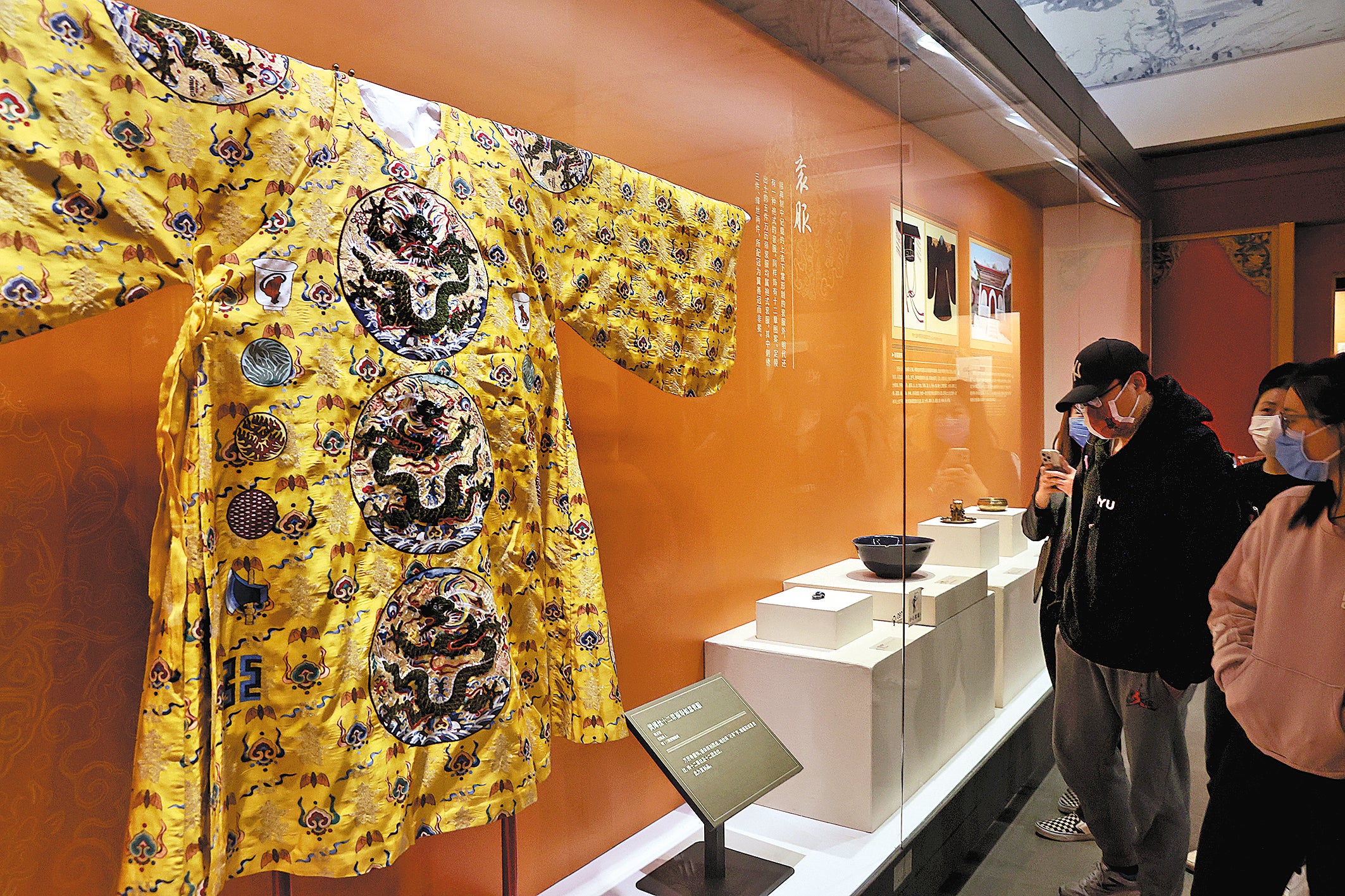Wanli’s window into imperial history
THE ARTICLES ON THESE PAGES ARE PRODUCED BY CHINA DAILY, WHICH TAKES SOLE RESPONSIBILITY FOR THE CONTENTS

In 1573, Zhu Yijun sat on the throne, as a 10-year-old boy and the ruler of an empire that had fallen from its apex.
That started the story of the longest-reigning emperor of the Ming Dynasty (1368-1644). Zhu’s life was full of controversies and legends – political unrest, tense relations with high officials, and loneliness as a result of his “tiger mother”, which together made it difficult for him to handle state affairs.
However, his 48-year rule had another side: economic boom, reviving links overseas, military triumphs, quenching rebellions, and successful efforts in fighting invaders. Better known as Emperor Wanli, he ruled in a complicated era and left room for history to argue and judge.
An exhibition in Beijing might inspire viewers to re-evaluate his entangled life.
Co-organised by the National Library of China, Art Exhibitions China and several other institutions, the four-month exhibition Encounter a Colourful Ming Dynasty in 1573: A Special Exhibition on Cultural Relics From Wanli Era opened to the public in late April at the National Museum of Classic Books. The 137 artefacts include gold, silver and jade items, textiles and porcelain.
“The artefacts not only represent the high level of art and craftsmanship during that time, they also demonstrate the royal aura and social features,” Feng Xue, a curator of the exhibition, says.

The emperor’s crown, which was knotted with more than 500 gold threads, is among the highlights of the exhibition. Each thread is no wider than 0.008 inches, and the crown weighs about 1.76lb. A pair of dragons are entrenched on both wings of the crown, and some 8,000 gold “dragon scales” are used to decorate the crown, showcasing advanced techniques back then.
In the 1950s, China had its first and so far the only archaeological excavation of the Ming imperial tombs. Wanli’s mausoleum, also known as Dingling, was opened. More than 3,000 cultural relics were found in his tomb. For example, the exquisite royal robes worn by the emperor and his empress may impress people with the refined artistic taste. However, they are also testimony of an etiquette system, emphasised throughout Chinese history.
Emperor Wanli chose the location of his future resting place when he was only 21. It took six years to construct Dingling, the layout of which is almost a replica of his splendid lifetime home, the Forbidden City.
Among the exhibits are gold dining ware, miniature furniture made of bronze, coins inscribed with auspicious words to “keep off the devil”, and jade ritual artefacts that Wanli once used. Nonetheless, what he aspired to was probably more than his own peaceful resting place. A giant blue-and-white porcelain jar, with a diameter of more than 27in, expresses such hope. Grease was found inside the jar, indicating it was used to hold a lamp.
The Ming Dynasty came to its end 24 years after his death – his grandson, Zhu Youjian, committed suicide the day the Forbidden City fell. Amid inflation, famine and chaotic wars, aspiration for dynastic longevity and lasting prosperity became a dream.
“People may criticise Emperor Wanli for his role in the fall of the Ming, but his reign briefly reversed the declining tendency of the dynasty,” Sun Xiaobing, deputy director of Art Exhibitions China, says. “Its inclusiveness and vivid urban life impress today’s people and inspire their imaginations.”
As many historians note, Wanli’s era was a time of change.
Zhang Juzheng, a head politician, led reform in economic fields and official evaluations that had lasting influence later. Xu Xiake, a pioneering travel writer, toured the country for decades and presented a milestone geographical body of work.
Also during Wanli’s reign, Italian Jesuit priest Matteo Ricci became the first European to enter the Forbidden City, opening the connections between the East and the West through cross-cultural communication. The isolationist policy upheld by Wanli’s predecessors, which kept off pirates but restricted foreign trade, began to loosen and booming overseas trade across the high waves re-emerged.
“Trade during the age of exploration brought material civilisation from overseas into China and thus enabled exchanges and mutual influence among various cultures,” Feng, the curator, explains. “Urban culture boomed and the publishing industry particularly flourished. Communication of thoughts created amazing sparks and bred rich cultural fruits.”
